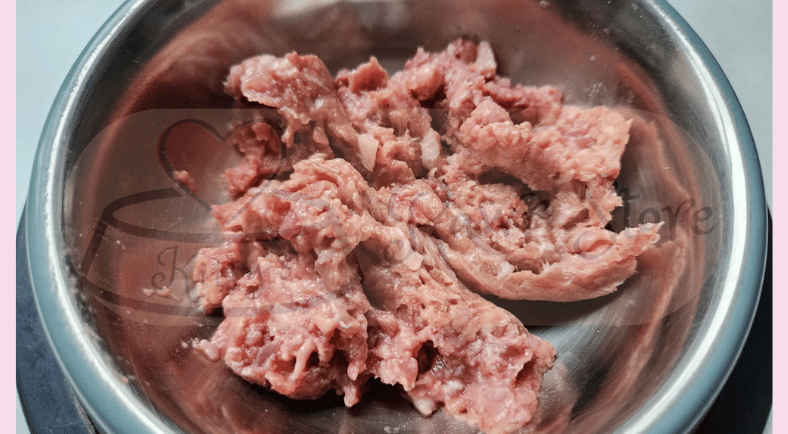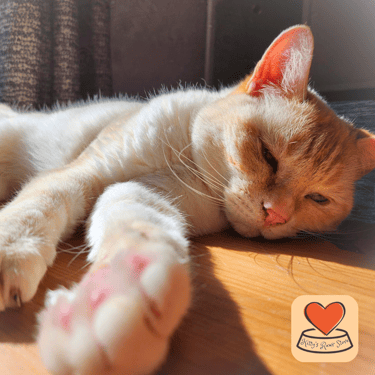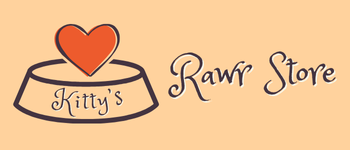Transitioning to a Raw Diet
A helpful strategy to help make the transition to raw feeding smooth for you and your pet.


Transitioning your cat from wet or dry food to a raw diet may seem daunting, but with patience and care, it can be a smooth process. If you are planning the switchover, it is best to plan in advance.
If your cat is currently on a dry or kibbled food, the first step is to start introducing a high meat content wet food. When we talk about 'Wet food' we are referring to processed food, which is usually gently steamed and can be stored in a cupboard. Wet food usually comes in pouch or tin form and varies a lot in quality. Stick with a poultry based food, such as chicken or turkey, as these are simple proteins to digest and won't cause too much upset. Recommended wet food brands include:
Canagan
Hi-Life
Thrive
Carnilove
Applaws
Avoid brands such as Whiskas, Royal Canin or Felix as these do not meet the requirements we need at this point in the transition process.
Introduce the new wet food over a period of 7- 10 days starting we a teaspoon amount added to the dry food and increasing the amount slowly whilst decreasing the amount of dry biscuits. Having set meal times for your cat will help you keep track of the amount being consumed and also make them more likely to tuck in straight away as apposed to food being left untouched from being readily available at all hours.
Once your cat is fully transitioned onto an exclusively good quality wet diet, transitioning to raw will be easier. Begin by gradually introducing raw cat food into your cat’s diet over two weeks. As in the step before, start by mixing a small amount of raw food with their current food, or if they really don't like that, try the 'two bowl method', by putting out two bowls separately at the same time to allow the cat to choose freely. Start with a small amount of the new raw food in one bowl and mostly the original wet food in another, then gradually increase the raw portion and decrease the original portion as they adjust.
Patience is the key here, if your cat starts taking a dislike to the food provided, don't be scared to go back a step and try again but with longer increments. It's essential to monitor their reactions closely, looking for any digestive issues or preferences. Offer various proteins like chicken, turkey, and rabbit to keep their diet exciting and balanced. Don't be tempted to move towards tuna or other fish as, contrary to popular belief, these are not naturally found in their diets, a poultry or game based protein is much more suited to their digestive needs. Ensure you’re using complete high-quality, raw products and maintaining proper food safety practices.
Remember, you can consult your veterinarian before making this change to ensure that your cat’s nutritional needs are being met. Vets can often be concerned with a raw diet plan as it can pose contamination issues for humans if not handled with care. This is also why it is important to buy from reputable brands and don't just buy mince from the supermarket and feed it to your cat! Human raw meat carries more bacteria on it which is killed during the cooking process. This means that feeding raw meat meant for humans to your cat is increasing bacterial risks to feline and humans alike. This kind of feeding will also not give your cat a balanced diet of muscle meat, bone and offal. Raw cat food undergoes more testing to prevent bacteria such as salmonella from reaching your home and is often 'cleaner' and fresher then raw meat found in supermarkets.
Feeding cats a raw diet can offer numerous benefits that promote overall health and well-being. First and foremost, raw food is closer to a cats natural diet, which can lead to improved digestion and nutrient absorption. This type of diet is often higher in protein, supporting lean muscle mass and energy levels. Additionally, raw diets can help maintain healthy teeth and gums, as the act of chewing on raw meat can reduce plaque build up. Many cat owners report shinier coats and healthier skin, as raw diets are typically rich in essential fatty acids. As a kitty keeper, you will benefit from less mess in the litter tray as a raw diet contains more digestible product and creates a higher absorption rate compared with other types of food. This means there is less waste product coming out the other end. Furthermore, feeding raw can minimise the risks of food allergies and sensitivities, as it allows for more control over the ingredients and provides ingredient transparency. Overall, transitioning to a raw diet can enhance a cat's quality of life, making it the natural choice for many feline companions.
Need further advice?
Try our Advice Page for quick hints to help your furry feline. Or drop us a question via our contact form on the 'Contact Us' page and we will try our best to get you answers.








